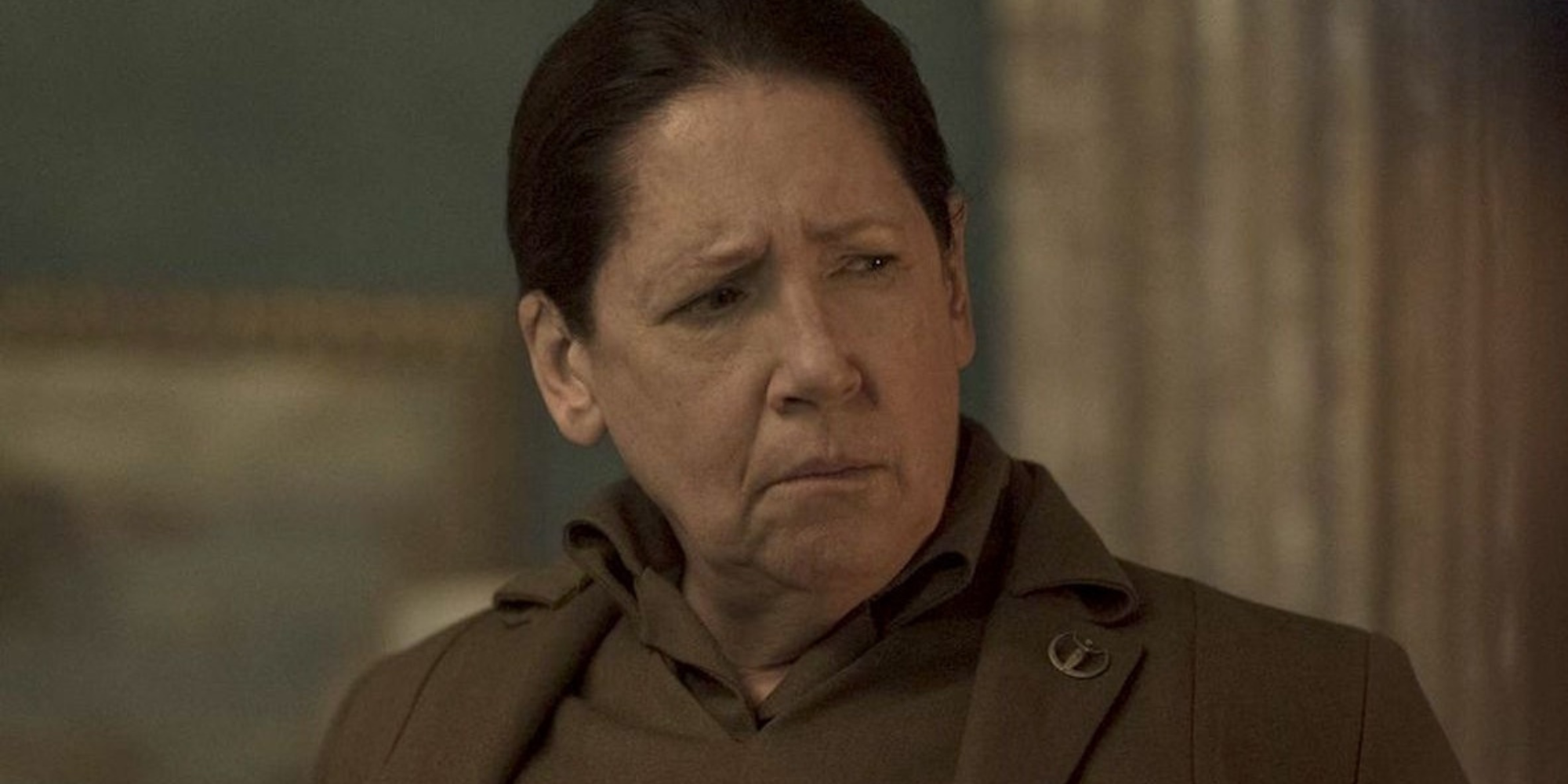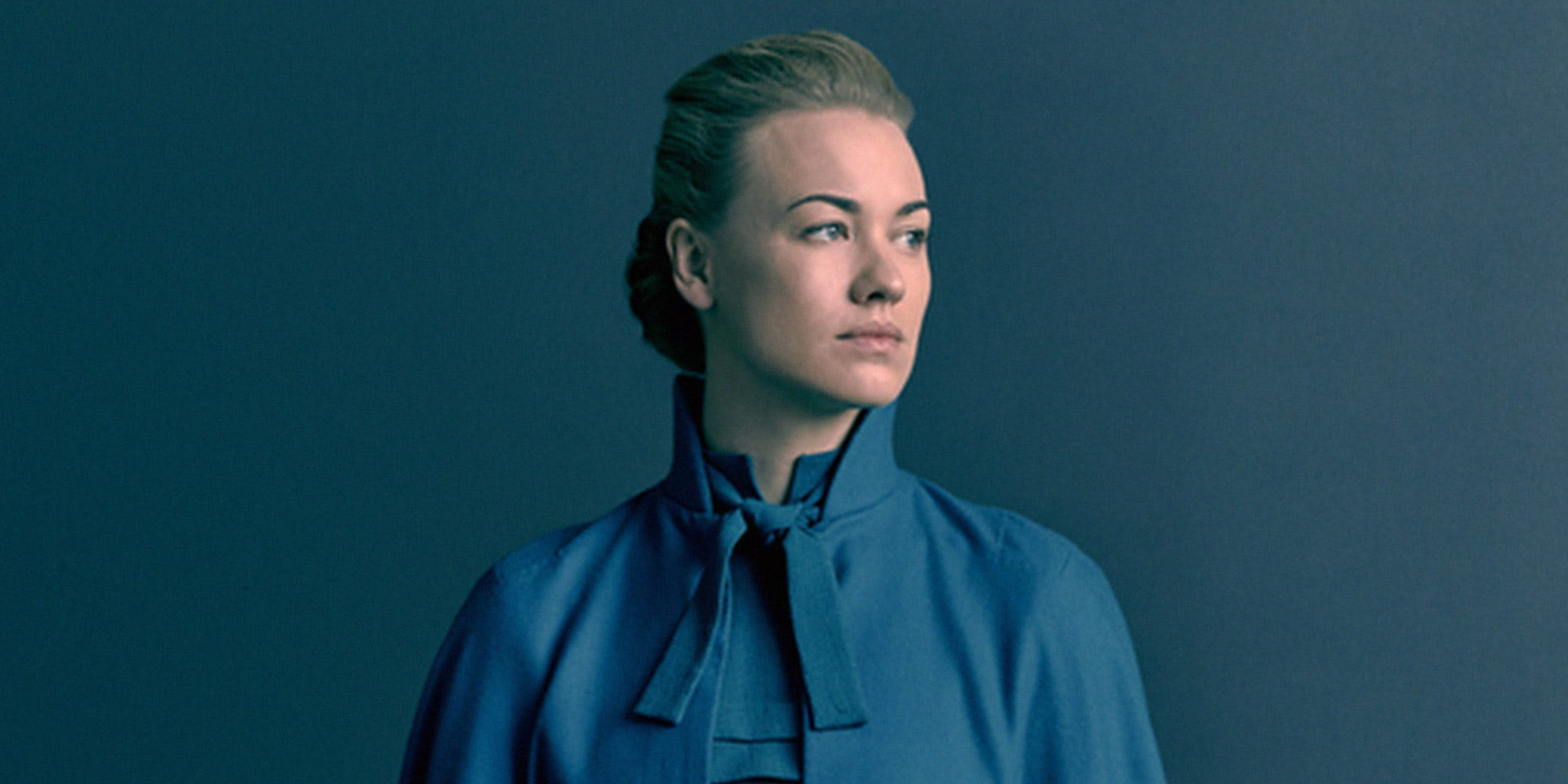CONTENT WARNING: This article contains retrenches to rape and sexual assault depicted in The Handmaid’s Tale. Reader discretion is advised.The Handmaid’s Tale, a successful adaptation of Margaret Atwood’s 1985 novel of the same name, has taken viewers on a wild ride in a dystopian world where women are subservient to men under a theocratic reign to repopulate the old America (now known as Gilead). With climate issues causing infertility, The Handmaid’s Tale attributes verisimilitude through a fictional setting, commenting on human rights issues that are prevalent worldwide. Season 5 of the series is set to return on Hulu on the 14th of September 2022.
‘The Handmaid’s Tale Season 5 Sets Release Date With New Images Of June And Serena
A dystopian series, The Handmaid’s Tale is filled with all types of villains who have cultivated suffering by their own hands. At surface level, Fred Waterford (Joseph Fiennes) is the show’s main antagonist, as one of the creators of Gilead and its regime, who routinely rapes June (Elisabeth Moss) while baring the words of scripture as a means of justification. However, as the show progresses, a small circle of characters has many deeds brought to light, where through their actions, others have suffered. While the show elicits a multi-faceted look at each character, some are more worthy of redemption than others.
6) June
Throughout four seasons of The Handmaid’s Tale, June has transformed from the series protagonist to somewhat of an anti-hero figure. Her traumatic experience of living in Gilead, being separated from her husband and child, and losing all autonomy built her desire to take down the theocracy and those who inhabit it, often making her lose sight of the risk to her safety and those of others. June justifies her actions as merited under the pretenses that the world deserves revenge — a typical troupe for a villain archetype — and carries out her plans without consideration of the fallout.
Her choices have led to the deaths of characters, the suffering of handmaids (remember season 2’s mock execution as punishment?), and her taking on a cold, no-BS demeanor. As the show’s central character, June’s change is responsive to the environment, she has been subject to, and viewers can see her as a morally gray person — a rebel willing to take down an unjust system by all means.
5) Commander Lawrence
Unlike June, who progressed into villain territory, Commander Lawrence (Bradley Whitford) was a corrupt character who, over time, realized his faults and regretted his actions. He is an enigmatic character who once worked as an academic and wrote books on the fertility crisis and how it impacted the economy, showcasing his present identity as a utilitarian. A higher-up in the Commander network, Lawrence shaped Gilead with his tactical approach to the economy and is in charge of major operations in international trade, foreign policies, and security measures.
While he didn’t create such rules under religious pretenses, Commander Lawrence’s logic clouded his judgment, leading him not to consider those who would suffer because of the model. A pragmatist, he appears to rework the rules for others, such as not participating in the ceremonies, helping Emily escape, and facilitating June’s plan to rescue children out of Gilead. Whether this is due to a softness in him, or his utilitarian mindset, is unclear.
‘The Handmaid’s Tale’: Top 3 Episodes Of Every Season, Ranked By IMDb
4) Aunt Lydia
Secondary to Fred Waterford, the following prominent villain in the series is Aunt Lydia (Ann Dowd), the head of the handmaid system in charge of indoctrination and discipline. Tasked with keeping the handmaids subservient to altered Bible teachings, the devout fundamentalist brutalizes women to keep them “in line.” This takes form through institutionalizing rape, mutilating women for their sexuality or speaking out of terms, and other physical punishments such as having the women’s wrists burnt.
Lydia is a complex character who is so devoted to her teachings that she allows them to manifest into brutality, ultimately using the Lord’s name in vain to exercise control. She truly believes that her actions are justified for religious righteousness, but deep down still displays care and empathy towards “her girls,” particularly Janine (Madeline Brewer). Viewers who have read Margaret Atwood’s sequel, The Testaments, will also be led to believe that her role as an Aunt may be more complex than the matriarchal leader of the Red Center that the show initially makes them perceive.
From ‘The Handmaid’s Tale’ To ‘Mass’: 9 Essential Performances By Ann Dowd
3) Commander Putnam
Commander Warren Putnam (Stephen Kunken) is a minor character in the series, yet proved to be a cruel personality. Outside his role as a serial rapist who justifies the ceremonies by religious belief, Commander Putnam’s treatment of Janine uplifts his status as one of the series’ most evil villains. He convinced Janine that he loved her and would leave his wife to start a life with her. Distraught when she realizes that he used her, Janine announces his infidelity before she attempts suicide, where Putnam gets his hand amputated as punishment.
2) Fred Waterford
At the core of June’s suffering is her place under Commander Fred Waterford, a man who is in a position of power amongst the Sons Of Jacob. Fred’s list of transgressions is long and bloody, whereby as the creator of Gilead and the handmaid system, he was responsible for rape, mutilating his wife’s hand as punishment for reading, trying to engage in a relationship with June, visiting a brothel, and the generalized brutality inflicted on those in the Gilead system below his rank. Masking himself as a kind, just man, his actions are not without a cause — such as when he gives June a photo of Hannah (Jordana Blake) before making sexual advances on her.
‘The Handmaid’s Tale’ Season 5: Alexis Bledel Exits Dystopian Series
1) Serena Joy
The true villain of The Handmaid’s Tale is Serena Joy Waterford (Yvonne Strahovski), the author of “A Woman’s Place,” — which laid the foundation for the republic of Gilead. A strong-willed woman with theocratic beliefs, Serena is shut out of the power structure in Gilead as her role becomes diminished to her ‘purpose’ as a subservient woman. Infertile, Serena’s primary concern shifts into wanting her handmaid to produce a child for her, which manifests at the beginning of her cruelty.
To achieve this, Serena forces June and Nick (Max Minghella) to sleep together, for she believes that Fred is incapable of producing children himself. Serena enacted several cruelties during the series, from mistreating June, refusing mutilated handmaids to enter the gala, threatening Hannah’s safety if June missteps during her pregnancy, and forcing Fred to rape June as a means of inducing labor. Although she has moments of humanity, Serena has proven that she only has her interests at heart, as she often worked to unravel any positive actions she originally embarked on.
7 Differences Between ‘The Handmaid’s Tale’ Series And Original Novel














































































